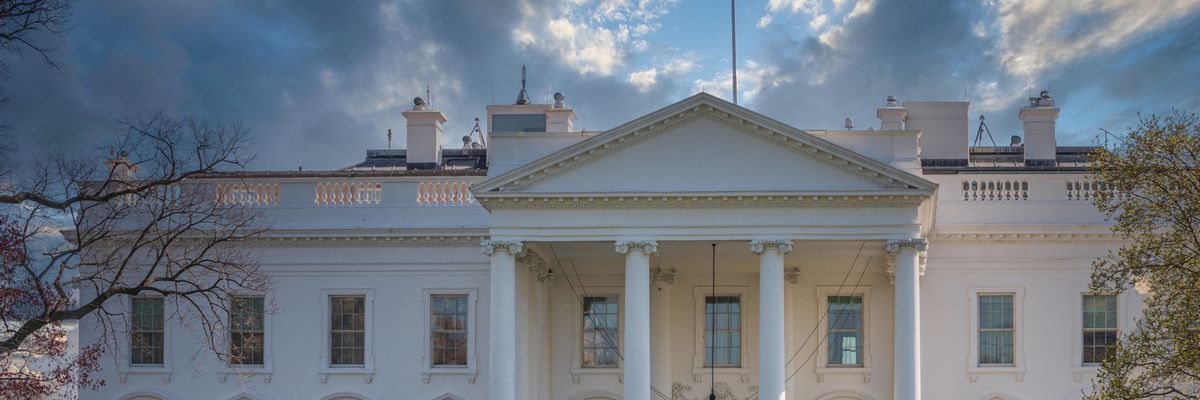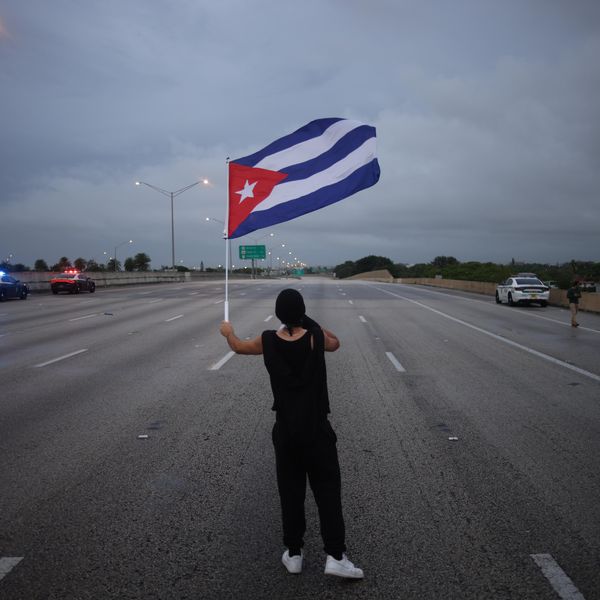Jan 09, 2020
On the same day dust was settling was from President Trump’s decision to assassinate Islamic Revolutionary Guard Corps Major General Qasem Soleimani, a striking news story largely went unnoticed as pundits, experts, and analysts attempted to explain Trump’s potentially region destabilizing action.
Bloomberg reported last week that Richard Goldberg — one of the National Security Council's (NSC) most outspoken Iran hawks, and a close ally of former National Security Advisor John Bolton — was departing the council “for personal reasons.” However, the Bloomberg story didn’t deliver its real bombshell until the last sentence: “Goldberg will return to [the Foundation for Defense of Democracies], which continued to pay his salary during his time on the National Security Council.”Like Goldberg, the Foundation for the Defense of Democracies (FDD) regularly promotes regime change and war with Iran. It also prominently disseminated false assertions about Saddam Hussein’s development of weapons of mass destruction (WMD) in the lead-up to the Iraq War, and its initial mission statement includes a pledge to provide “education meant to enhance Israel’s image in North America.”Responsible Statecraft reviewed U.S. Office of Government Ethics filings and found FDD’s financial support of Goldberg’s work also extended to subsidizing Goldberg’s travels. FDD paid for Goldberg’s $7,865 airfare and $380 in hotel expenses for a May 19 -22 trip to Jerusalem. The group also paid for Goldberg’s $3,977 airfare, $645 hotel expenses, and $63 meal costs, for a trip to Vienna from September 8-12.In both instances the trips were described as “[U.S. Government] Delegation” and the “event sponsor” was listed as “Foundation for Defense of Democracies.” It’s unclear at this point just why FDD was paying Goldberg a salary, or whether he was also concurrently being paid by the U.S. government. Either way, the news adds to a widespread pattern of corruption throughout the Trump administration. “Corruption and conflicts of interest have been at the heart of even this administration’s most profound decisions,” Ned Price, former special assistant to President Obama on national security, told Responsible Statecraft. “And that extends to Iran, where we now know a White House point person on Iran policy was receiving a salary from and remained employed by an organization that has put forward some of the most extreme and dangerous pro-regime change policies.” Price added that FDD has “made no secret of its continued lobbying of the White House, while keeping secret that it had planted one of its employees within the inner sanctum of administration policy making. It’s the type of corruption and conflict of interest that can spell the loss of life and even the march to war, as we’ve seen.”Indeed, as Bloomberg points out, FDD consistently pushes for increasingly hawkish strategies against Iran. FDD experts have repeatedly advocated for bombing Iran and ratcheting up punishing economic sanctions, all under the promise that “maximum pressure,” as the group often calls for, will eventually lead to regime change in Tehran or submission by the Iranian government to a wide-ranging list of demands by Secretary of State Mike Pompeo.An archived, February 16, 2003, version of the website contained a Frequently Asked Questions Section about FDD. In response to the question, “Should the war expand beyond Afghanistan?” FDD, as an institution, responded: “President Bush said he’s going after not only the terrorists but also the regimes that harbor the terrorists.” It added, “We know Saddam Hussein is making weapons of mass destruction — biological, chemical and nuclear — and remains a serious threat. But other nations that harbor or sponsor terrorists — Iran, Syria, Somalia, Sudan, North Korea, Cuba — also must change their behavior. If we don’t insist on that, we won’t win this war.” A 2004 CIA report concluded Saddam Hussein did not possess stockpiles of illicit weapons, his WMD program was destroyed in 1991, and Iraq’s nuclear program ended after the 1991 Gulf War.FDD is widely cited in the media, but its role in spreading falsehoods about Saddam Hussein’s WMD program and constant push for war with Iran are rarely mentioned, nor is the fact that several of the group’s top donors are also Trump’s biggest campaign supporters. Since the Soleimani assassination last week, the Washington Post, for example, quoted FDD staff on two occasions, never providing any context about the organization or its background.The New York Times published six articles citing FDD staff or otherwise mentioning the group over the past week. Three of the articles gave no context about FDD, while three others described the organization merely as, “an organization that has rallied opposition to Iran’s government,” “a group that has led opposition to the Tehran government,” and “a hawkish Washington think tank that consults closely with the Trump administration on Iran policy.”None of them make any mention of the group’s two-decades long drive for expansive U.S.-led wars in the Middle East, nor do they note that part of FDD’s mission, as stated in its incorporation application, is to advance the interests of a foreign country.“Foundation for the Defense of Democracies, Inc. (‘FDD’) was incorporated in New York on April 24, 2001 as EMET: An Educational Initiative, Inc. (‘EMET’),” FDD’s April, 2001, IRS application for non-profit status reads. “The initial purpose of EMET was to provide education meant to enhance Israel's image in North America and the public's understanding of issues affecting Israeli-Arab relations. The attached brochure illustrates EMET's initial purposes, and the methods by which EMET was to attain such goals. These goals continue as part of FDD's purpose.”The application explained that FDD was expanding its mission to include “develop[ing] educational materials on the eradication of terrorism everywhere in the world.”FDD has indeed considerably expanded its mission, but the original goal of “promoting Israel’s image in North America” is completely missing from its website and in almost all media mentions of the group, its staff, and its positions."When you're a National Security Council employee, you're supposed to advance the interests of the U.S. government and only those interests,” Tommy Vietor, former National Security Council spokesman under President Obama, told Responsible Statecraft. “The fact that an outside group with murky funding sources and hawkish leanings could place an individual at NSC is fucking crazy."Vietor pointed to FDD's hosting of a conference critical of Qatar, paid for by the UAE via an intermediary, and raised questions about whether Goldberg could have had part of his salary paid for by a foreign source.Indeed, the new information that a prominent Iran hawk at the National Security Council was paid by FDD should raise serious questions about FDD’s influence over the administration’s Iran policy, especially as Trump’s assassination of Soleimani, a move cheered by FDD’s experts, brings the U.S. closer to a dangerous military confrontation with Iran.FDD did not respond to questions about why they were paying Goldberg’s salary and whether the group pays the salaries for any other federal employees.















